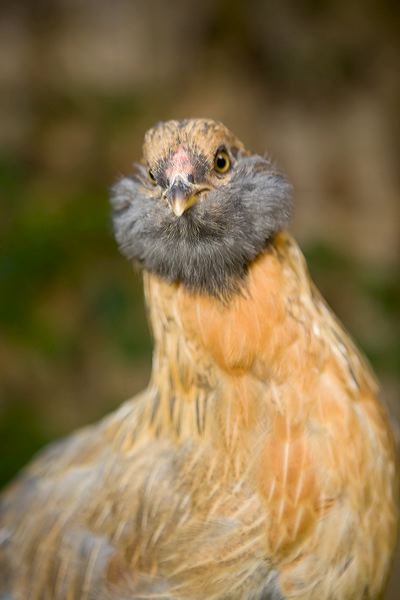
Edie with her beard
I’ve been so ashamed to admit that my pampered, pet chickens have mites that until recently I haven’t told a sole. I’ve spent many, many late night hours searching through the archives of backyardchicken.com educating myself on how to spot them and how to get rid of them. There are many different schools of thought, which, although helpful, has added to my confusion on how to deal with the problem.
My battle started a few months ago when I noticed Edie’s luxurious beard getting a little mangy looking. I bought a bag of diatomaceous earth and sprinkled it liberally inside their coop. Diatomaceous earth or DE for short, is fossilized diatoms or a hard-shelled algae. It’s tiny edges abrade soft-bodied animals that come into contact with it causing them to die of dehydration. You use food-grade DE with chickens (non-food-grade is lethal) to kill mites, lice and to deter flies. Some gardeners also sprinkle the stuff around their plants to protect them from slugs. When using DE, you must wear a dust mask and eye protection.
I also read that you need to dust your chickens. What the heck does a city girl know about how to dust a chicken?! I immediately turned to the internet, which has never let me down until this point. I was told to hold them upside down by their legs and sprinkle the DE all over them. Under wings, by their vent (chicken speak for poop shoot) and around their neck. You can put the DE in the foot of a stocking and use it like a powder puff. I thought for sure that YouTube would have a video showing me how to do that, but they didn’t. They have lots of videos of chickens rolling around in the dirt taking a voluntary dust bath in case you are interested in that? No? Okay. I also read that you can put DE in a plastic bag, put the chicken into the bag up to its neck and then just shake the bag. One person on the chicken forum made the connection to Shake N’ Bake and I can’t get that image out of my mind now. Plus I can’t figure out how to do that without strangling your chicken.
We then proceeded to have the rainiest June I can remember. Every time I dusted the chickens (which consisted of me sprinkling DE on them and then trying to massage it under their feathers) and their run it would rain. DE doesn’t work when it gets wet. Gah. Edie started to look mangier and her egg production fell off. When she layed eggs, they were strange – bumps on the shells, soft-shells, no shells. She didn’t act sick, but I knew that there was a problem. I bought some Poultry Protector and sprayed it in their coop and on them. Poultry Protector is a natural enzyme that kills mites, but isn’t harmful to the birds or the environment.
But the rain continued and I didn’t get rid of the mites. Or at least Edie’s neck and eggs still were in bad shape. Getting rid of mites is a bit like fighting an invisible boogey man. I could never see them, but I knew they were there. I decided to use different products. I stepped up a rung on the toxic spray ladder and bought some permethrin. I draw the line at Sevin, which a lot of people use to great success. What killed the Sevin for me was the part on the warning label that says it kills bees. I couldn’t be a part of the collapse of the honey bee population. Permethrin is derived from plants, which makes it sound less toxic, although it too has a pretty long list of warnings on the bottle. I sprayed the coop after I cleaned it thoroughly and I also sprayed the wood chips in the run. I also sprayed a little on the girl’s tushes. I washed Edie’s tush because it was getting a little dirty looking. I was horrified to see lots of missing and broken feathers. See thoroughly gross photo…
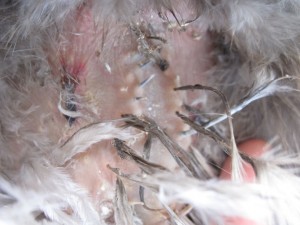
broken and missing vent feathers
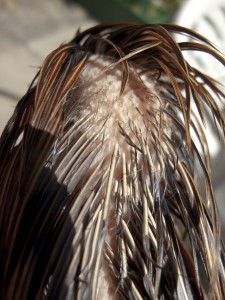
feathers missing on the back of Edie’s neck
I also bought flea and tick shampoo and powder. My toxic arsenal was getting larger!! They both contain permethrin in their ingredient lists. A lot of chicken keepers have success bathing their chickens in flea shampoo, so I thought I would give that a try. You see, you have to continue battling the chicken mites for a while to break their egg cycle. These products kill the mites, but not the eggs, so you have to do a second or third (or in my case 45th) round to make sure you catch all the hatching mites. The discouraging part is that even though you might kill all the mites in your immediate coop area, some mites can live for 6 weeks off their host and can come back to re-infest your flock.
So here are some photos of Edie after her flea bath. I put her in my daughter’s Lego tub and then lathered her up on the patio. I rinsed her several times with warm water to get the shampoo off of her. You have to make sure when doing this that your bird doesn’t get chilled. Even though it was a very warm and sunny day, I could feel her shivering a bit. I toweled her off and held her in the sunshine until she was dry. As you can see, she was not happy at all about being shampooed.
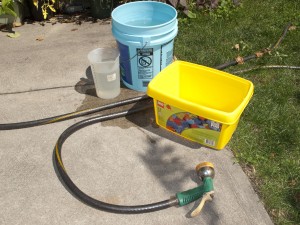
chicken washing station
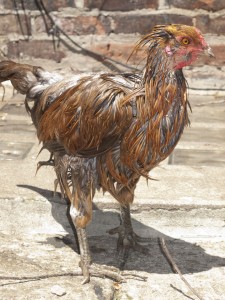
an angry wet hen
I also just ordered plastic roosting posts from Omlet as I read that mites can hide in the tiny cracks in wooden posts. When those arrive I will do another entire breakdown, scrubbing and dusting of their coop and run. Edie’s neck still looks very mangy, but I think I see some feathers growing in. I’ve been feeding all the girls yogurt (probiotics) and cat food (protein to help re-grow feathers), which they devour with gusto.
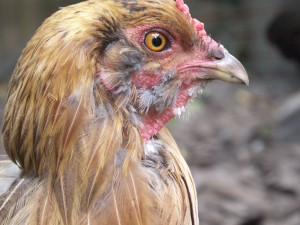
This has been a huge pain in the neck for both me and the hens and I hope I will get rid of the mites soon. Don’t worry about coming over, chicken mites don’t like humans. It’s just the thought of them that makes you itchy. And if someone wants to produce it with me, I think YouTube needs a video of how to dust a chicken.
Update: Since this post, I’ve learned that the mites do in fact bite humans. Many of my readers can vouch for that! And I did find YouTube videos for dusting a chicken. You can see some on my follow-up post here:
http://www.brooklynfeed.com/2011/05/dusting-your-chicken-for-mites/
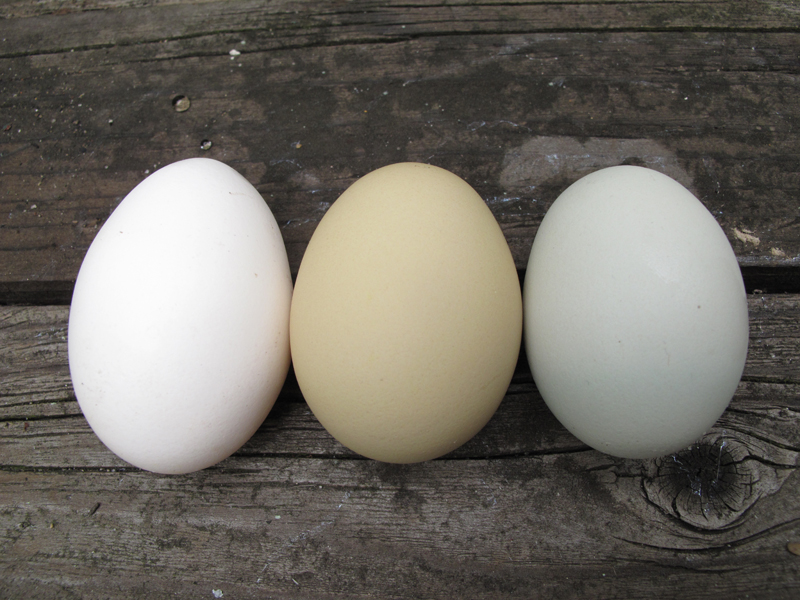
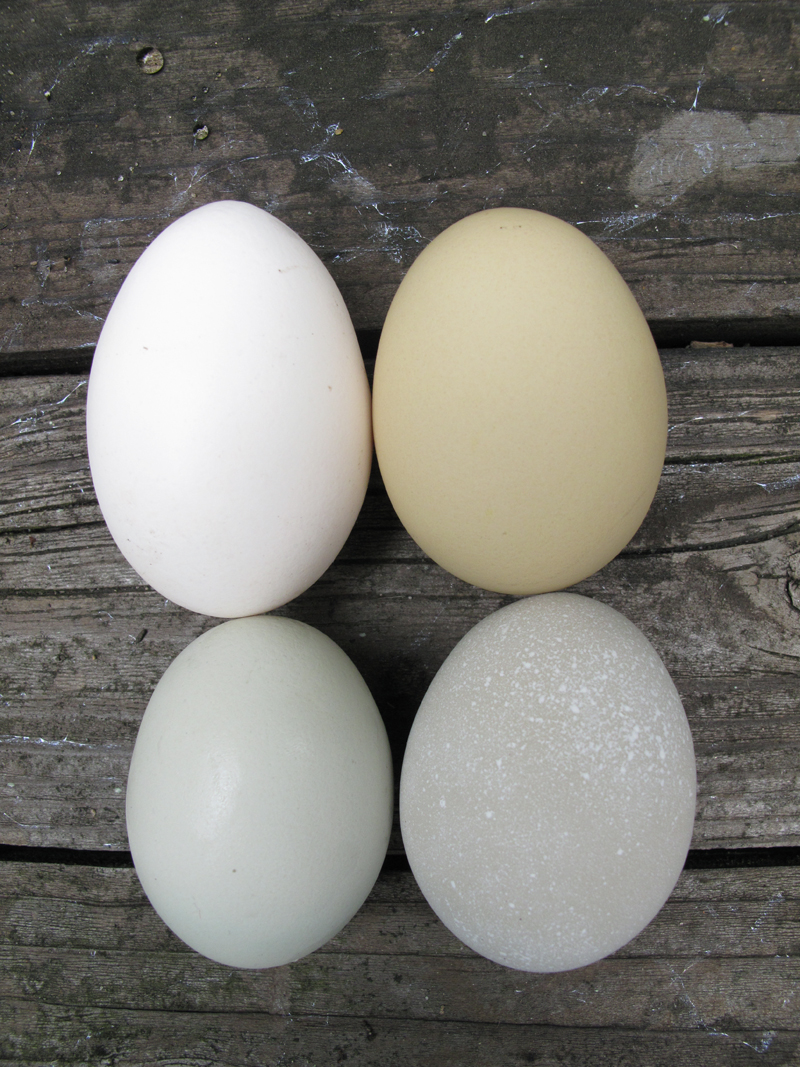
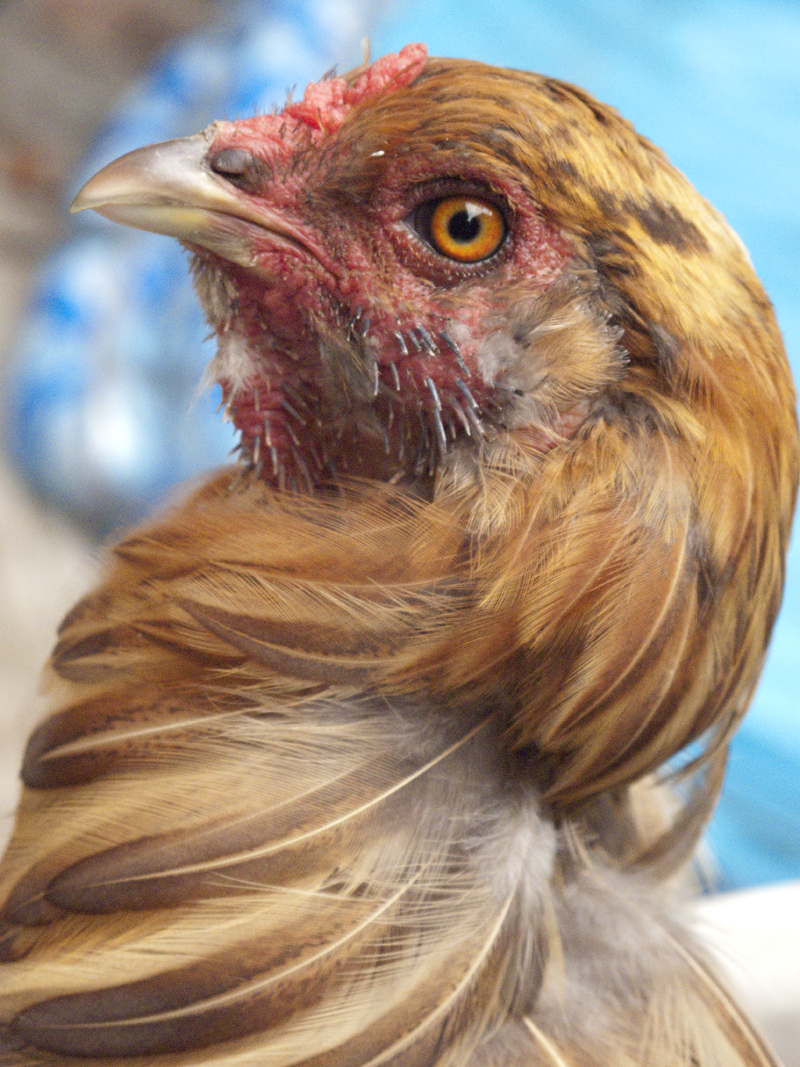

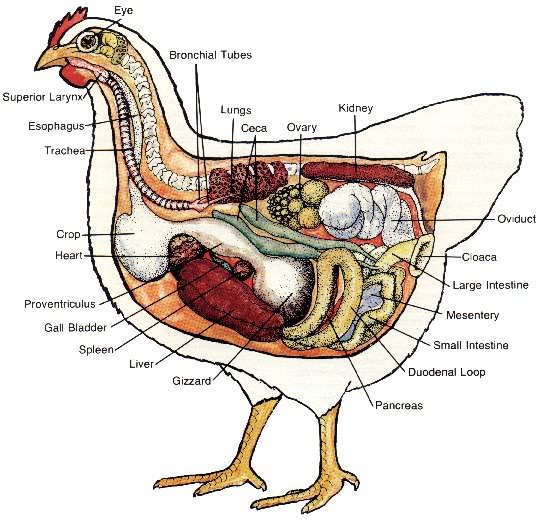
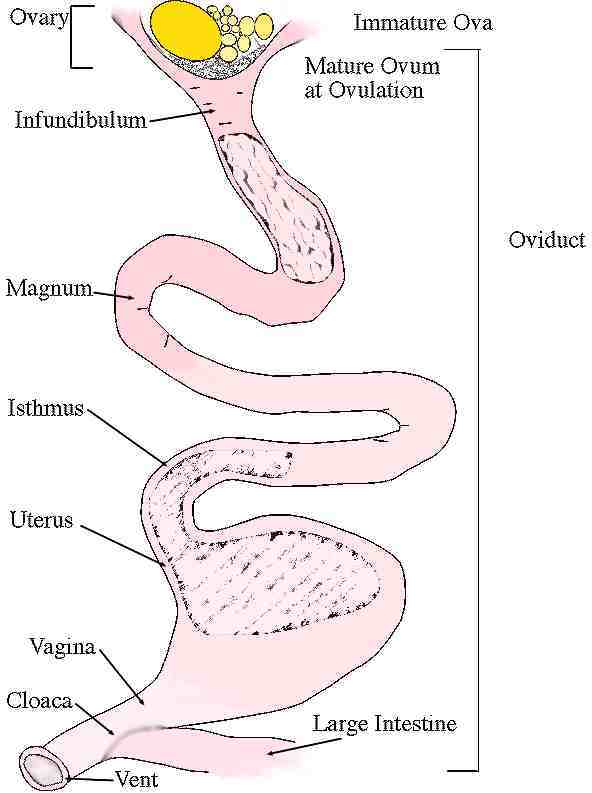
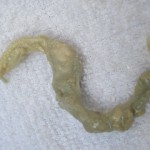
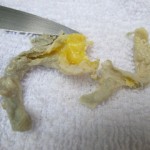

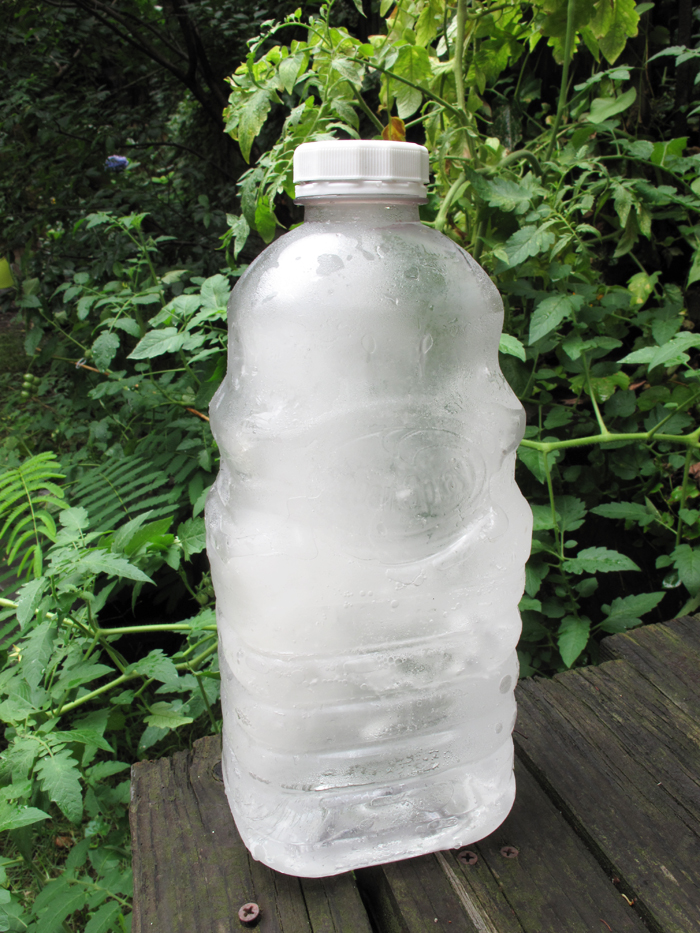






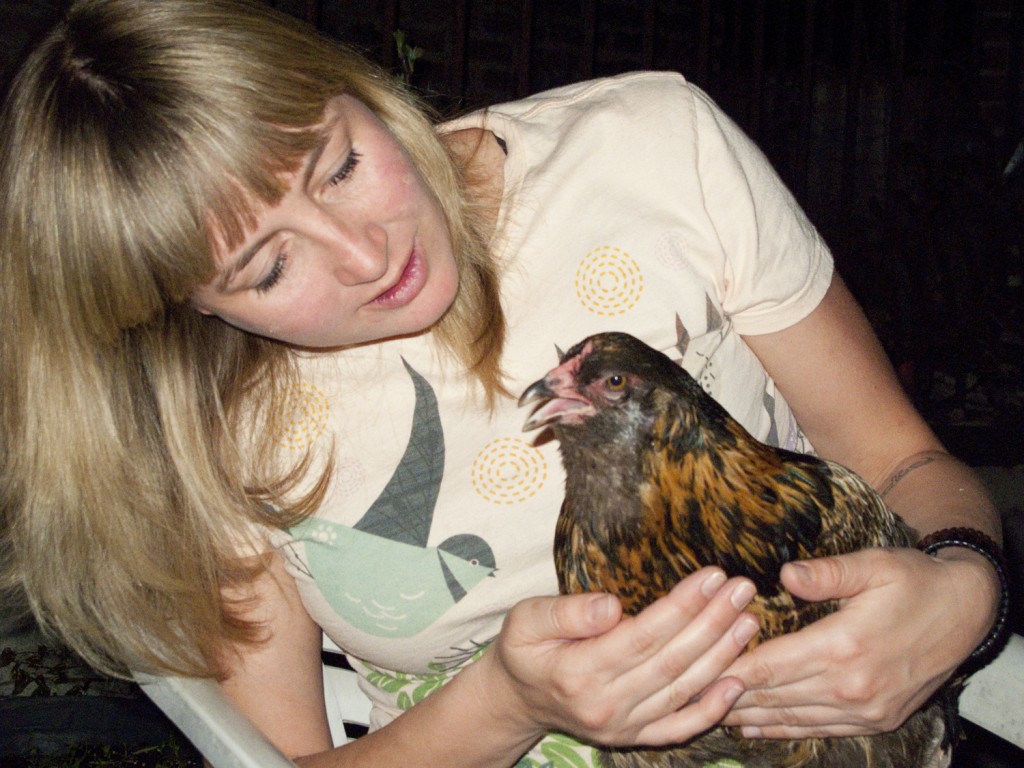 As I mentioned in an earlier post, I would recommend backyard chickens to almost anyone. Keeping chickens this past year has been a fun and educational experience for my whole family. We have brought our chickens to the local elementary school for their harvest fair and had our daughters pre-school class come to visit. Lots of friends have come over to see our set-up, and now two of them have chicks of their own.
As I mentioned in an earlier post, I would recommend backyard chickens to almost anyone. Keeping chickens this past year has been a fun and educational experience for my whole family. We have brought our chickens to the local elementary school for their harvest fair and had our daughters pre-school class come to visit. Lots of friends have come over to see our set-up, and now two of them have chicks of their own.